Cooling Off in the Tidal Basin
It’s that time of year again, and let’s be honest: I can’t be the only one dreaming of relaxing on a beach somewhere. With temperatures climbing into the 90s, not to mention the humidity, I think most all of us wish that our closest vacation getaway were closer. In this regard, Washingtonians of the 1920s were a little luckier than us. For many, there was a veritable beach they could visit smack-dab in the middle of downtown D.C. It had sand, a bathhouse, concessions ... All on the shores of the Tidal Basin.
Senator George Norris of Nebraska first introduced the idea of a public beach for D.C. in 1914. Apparently, the senator had some trouble adjusting to the city’s swampy summers and was jealous of many Northern cities’ booming seaside resorts. He asked Congress for $50,000 and the creation of a special committee to transform the Tidal Basin into D.C.’s own vacation spot. [1] The basin had been completed in 1896 as a visual centerpiece of the National Mall and as a tool for flushing the Washington Channel. Often called Twining Lake, it was more of a lagoon than the concrete-walled pond of our time, and many were already swimming there.[2]
But unfortunately, Congress’ response was what would be expected today if such an idea arose. It concluded the waters were entirely too polluted for a bathing beach. A report conducted in late 1915 found that the Tidal Basin was filled with wastewater and sewage: not exactly ideal for a nice dip.[3]
Senator Norris was unwilling to give up. As he suffered through the summer of 1916, he kept pushing Congress to fund some type of large-scale swimming facility in a city with “one of the most trying climates in the United States and inadequate bathing conditions.”[4] The District had one municipal pool, for whites only, and it could only accommodate 600 swimmers a day, although at times it held more than 2,000.[5] Evidently, Norris argued, it was time for something better.
Congressmen went back and forth. They determined that the basin’s pollution could be cleared with the installation of chlorine plants at the Inlet Bridge, but the costs seemed too high, especially in the midst of World War I. Norris retaliated: a bathing beach would be the perfect place for troops to relax, he argued, and it was already being used as a swimming spot.
The Congressional bickering continued throughout the summer until July 19, 1916, when the inevitable happened. A man drowned in the Tidal Basin, “primarily because there was no means of rescuing him when he got into trouble in the water.”[6] Colonel W. W. Harts, Superintendent of Public Buildings and Grounds, immediately began to back Norris’ plan to construct a beach there, complete with lifeguards and the necessary facilities to ensure swimmers’ safety. With a man dead, and people still using the waters to swim, Congress finally gave in. On February 2, 1917, Senator Norris’ proposition for a Tidal Basin bathing beach was put into a bill, with $35,000 (about $650,000 today) appropriated for the purpose.[7]
Congress chose the southeastern edge of the basin, near where the Jefferson Memorial is today, as the beach’s location. This site was almost halfway between the Inlet and Outlet Bridges and was on the direct course of the current of fresh water that streamed between them.[8] It also provided easy access from the streetcars, and of course, had a pretty killer view. As the summer of 1917 progressed, workers dumped tons of sand and gravel into the basin in an attempt to remove the jump into deep water that existed. At the same time, the Public Health Service oversaw the installation of four liquid-chlorine dispensers in the arches of the Inlet Bridge.
Capable of turning out twelve and a half pounds of chlorine per hour, officials guaranteed that these machines would be enough to completely sterilize the water.[9]
The Tidal Basin Bathing Beach opened to much fanfare with a water carnival on August 24, 1918. If you ever wanted to see government officials partake in a fancy diving contest, this was the place to be. Soldiers competed in tug of war, children built sandcastles, and young women flaunted their new bathing costumes. The Washington Herald estimated that over 2,000 people attended the day’s festivities.[10] And as the summer of 1918 dwindled away, the number of beach patrons kept rising. By the closing of the season just a month later, beach Superintendent Sidney W. Leech was asking Congress for funds for expansion.
But even with more shore space and facilities, the beach continued to burst at the seams. In July of 1919, a line of patrons waiting for access extended three blocks long.[11] The following year, more than 20,000 people visited the beach over the span of one 10-hour day.[12] It was Washington’s place to see and be seen. The beach offered swimming lessons, high-diving boards, lounge chairs, umbrellas — you could even buy soap and actually bathe in the chlorinated basin. The beach was so lively that one reporter from The Washington Times likened it to Atlantic City. Under a spread of photos of families enjoying the sun and surf he wrote: “Are they enjoying themselves? Well, say, did you ever see kiddies counterfeit grins like these?”[13]
The beach wasn’t totally without its problems, though. Remember, it was the early 1920s: women’s hemlines were rising, moralities were loosening, and many weren’t happy about it. At the Tidal Basin, officials expressly prohibited “revealing” bathing suits (meaning one-piece suits with hemlines more than six inches above the knee).[14] Women, unless under the age of six, were required to wear loose-fitting suits with skirts, and police were employed to measure any bathing costume they deemed inappropriate. In 1923, Colonel C. O. Sherrill, newly appointed Officer of Public Buildings and Grounds, moreover ended the annual beauty contests at the beach, proclaiming they worked against the policy of modesty that the beach sought to promote.[15]
As the 1920s progressed, additional, more serious conflicts arose. At this time, most public facilities remained strictly segregated. While whites regularly gathered at the premier Tidal Basin Beach, African American Washingtonians were still swimming in undeveloped areas of the Potomac that were largely dangerous. In July of 1921, Col. Sherrill asked Congress for the funds to create a beach for them. Three years later, a bill was finally passed appropriating $75,000 for one on the north coast of the basin.[16] But in February of 1925, before plans for the beach were even finalized, the Senate cut funding. Led by senators from Kentucky and Alabama, the votes were 53 to 22 against such a facility.[17]
With plans for an African American beach scratched, the Tidal Basin Beach for whites came under attack. Senator Phipps of Colorado, fearful of integration, pointed out that “if a colored bathing place is not provided, the colored population of Washington will insist on using the beach for whites.”[18] Other congressmen brought up the quality of the ever-polluted water. Was it really worth the trouble to continue funding its sanitation when the beach would never satisfy the entire population? This debate raged through Congress for the majority of the day on February 18, 1925, and by the time it was over, so was the beach.[19] Congress decreed that there would be no further bathing in the Tidal Basin and ordered the beach to close immediately.
By the time the summer of 1925 rolled around, the Tidal Basin Bathing Beach was back to simply being the Tidal Basin. Washingtonians — black and white — once again complained about the lack of safe swimming locations in the heat of the District summer, but Congress refused to discuss the topic any further. With a dismal lack of options, people began swimming anywhere there was water: on the shores of the Potomac, in fountains around the city, and even in the recently-completed Reflecting Pool.[20] And what excuse did they have? One man chalked it up with a phrase that still applies today: “Washington is the hottest place on earth in the summer.”[21]
Footnotes
- ^ “In Congress Today,” The Washington Post, 19 February 1915.
- ^ “Tidal Basin Construction,” Trust for the National Mall, accessed 15 July 2015, https://www.nationalmall.org/national-mall/explore-mall/map.
- ^ “Report of Pollution of Tidal Basin,” Evening Star, 11 December 1915.
- ^ Ibid.
- ^ “Pools Open in June: Tanks too Small for Crowds,” The Washington Post, 24 May 1914.
- ^ “Bathing at the Tidal Basin,” Evening Star, 20 July 1916.
- ^ “Capital Assured of Bathing Beach,” Evening Star, 20 February 1917.
- ^ Fisher, Perry Gerard, et al. Historic Structures Report: Tidal Basin Inlet Bridge (Washington: KressCox Associates, 1986), 32.
- ^ Ibid.
- ^ “Tug of War is Big Feature,” The Washington Herald, 25 August 1918.
- ^ “2,000 Stand For Hours In Line For Chance to Bathe in Tidal Basin,” The Washington Post, 7 July 1919
- ^ “20,000 at Tidal Basin: Attendance Records Shattered at Improved Bathing Beach,”The Washington Post, 14 June 1920.
- ^ “Why Envy Atlantic City? Look At Our Tidal Basin Beach,” The Washington Times, 27 June 1920.
- ^ “No 1-Piece Suits at Bathing Beach,” The Washington Times, 4 June 1919.
- ^ “Beach Beauty Shows Banned at Tidal Basin,” The Washington Post, 31 March 1923.
- ^ “Start Work on $75,000 Beach at Washington,” Afro-American, 13 December 1924.
- ^ “Senate Cuts Out Appropriation for Bathing Beaches,” The Washington Post, 19 February 1925.
- ^ Ibid.
- ^ “Statutes at Large: 68th Congress,” Library of Congress, accessed 15 July 2015,http://www.loc.gov/law/help/statutes-at-large/68th-congress/c68.pdf
- ^ “Were people ever allowed to swim in the Tidal Basin or the Reflecting Pool?” Histories of the National Mall, accessed 9 July 2015, http://mallhistory.org/explorations/show/swimming.
- ^ “Swimmers Protest Tidal Basin Bathing Beach Abandonment,” The Washington Post, 27 February 1925.



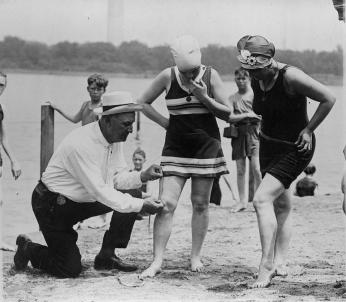
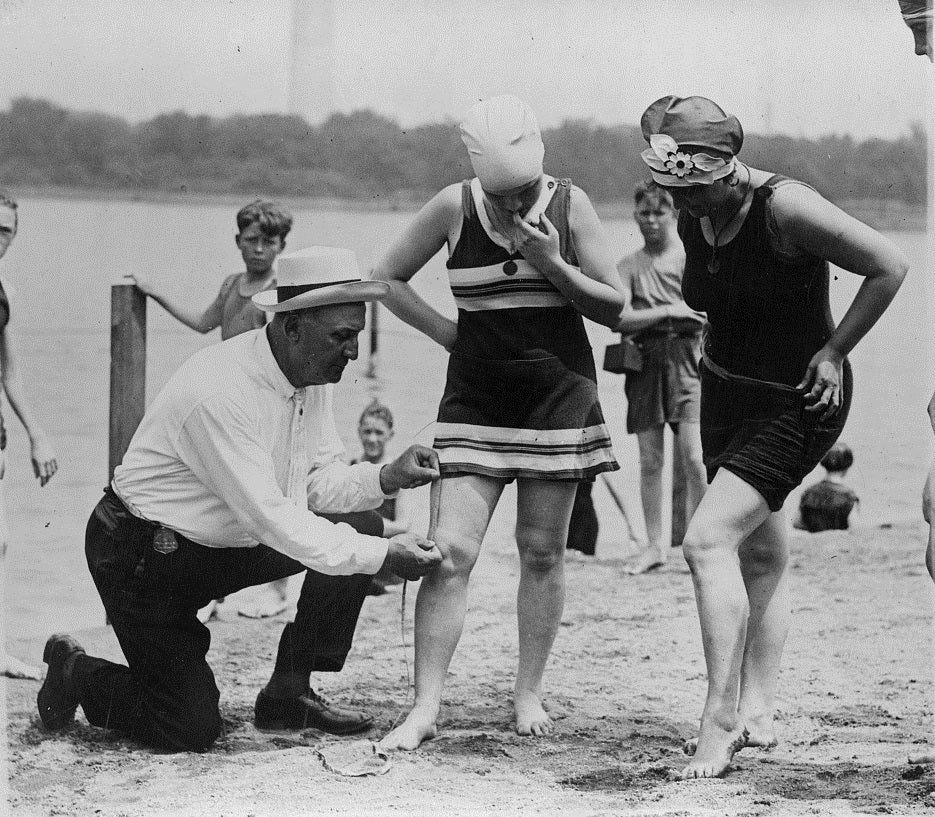
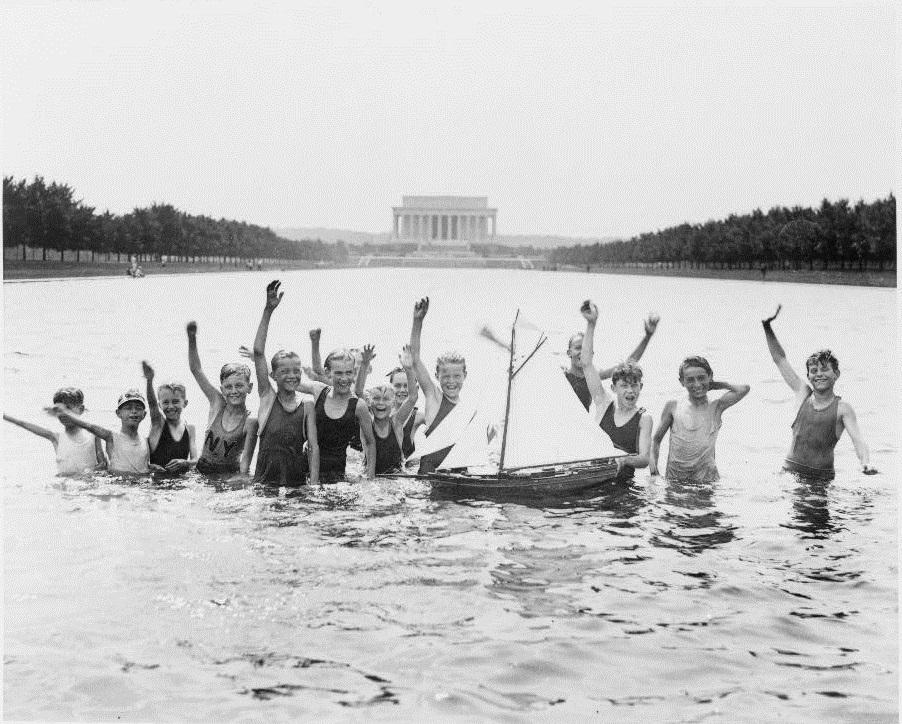
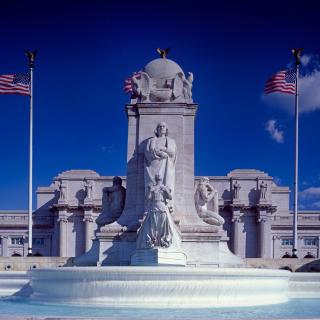
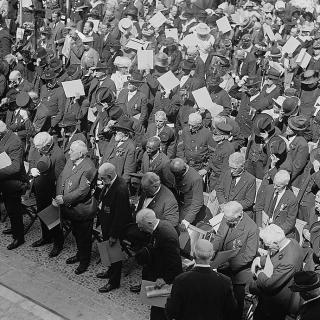
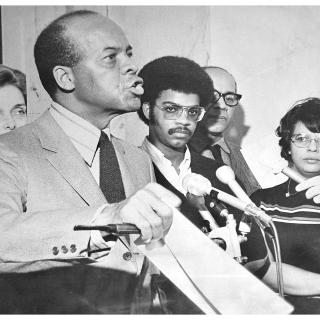
![Sketch of the mythical fuan by Pearson Scott Foresman. [Source: Wikipedia]](/sites/default/files/styles/crop_320x320/public/2023-10/Goatman_Wikipedia_Faun_2_%28PSF%29.png?h=64a074ff&itok=C9Qh-PE1)












